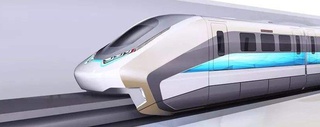Transrapid Maglev Vs ICE 3 Performance
We compare state-of-the-art German rail technology from the same era. The Intercity-Express 3 conventional train, which was introduced in 2000, and it's the fastest train in Germany to this date, and the Transrapid 08 maglev train which was unveiled just a year earlier and it's derivative model is used on a commercial line in Shanghai. These two rapid machines showcase how the two technologies they are based on are so distinctive. Conventional rail has a definite performance restraint.
Maglev Vs Conventional Rail Acceleration
The Transrapid 08 shows its edge at high speeds. When accelerating from 0 to 200 km/h (124 mph), the maglev is just around twice as quick, but when they continue to race towards 300 km/h (186 mph) the gap is more than three times as much.

Maglev Vs Conventional Rail Braking
There is a similar pattern when it comes to braking from high speeds. The TR08 maglev train outperforms the Intercity-Express 3 (ICE 3) train by a large margin again. It can stop both from 200 km/h and 300 km/h in half the distance. If that's not impressive enough, the Transrapid train stops quicker from 500 km/h than the ICE 3 train from 300 km/h. Considering how important this is safety-wise, it's clearly a big win for the maglev.

Maglev Vs Conventional Rail Top Speed
The ICE 3 train is licensed for 330 km/h (210 mph) and it has reached 368 km/h (229 mph) on test runs. The Transrapid SMT (the Shanghai version of the Transrapid 08) has a commercial top speed of 431 km/h (268 mph) and it has reached a Chinese record speed of 501 km/h (311 mph) in 2003.





